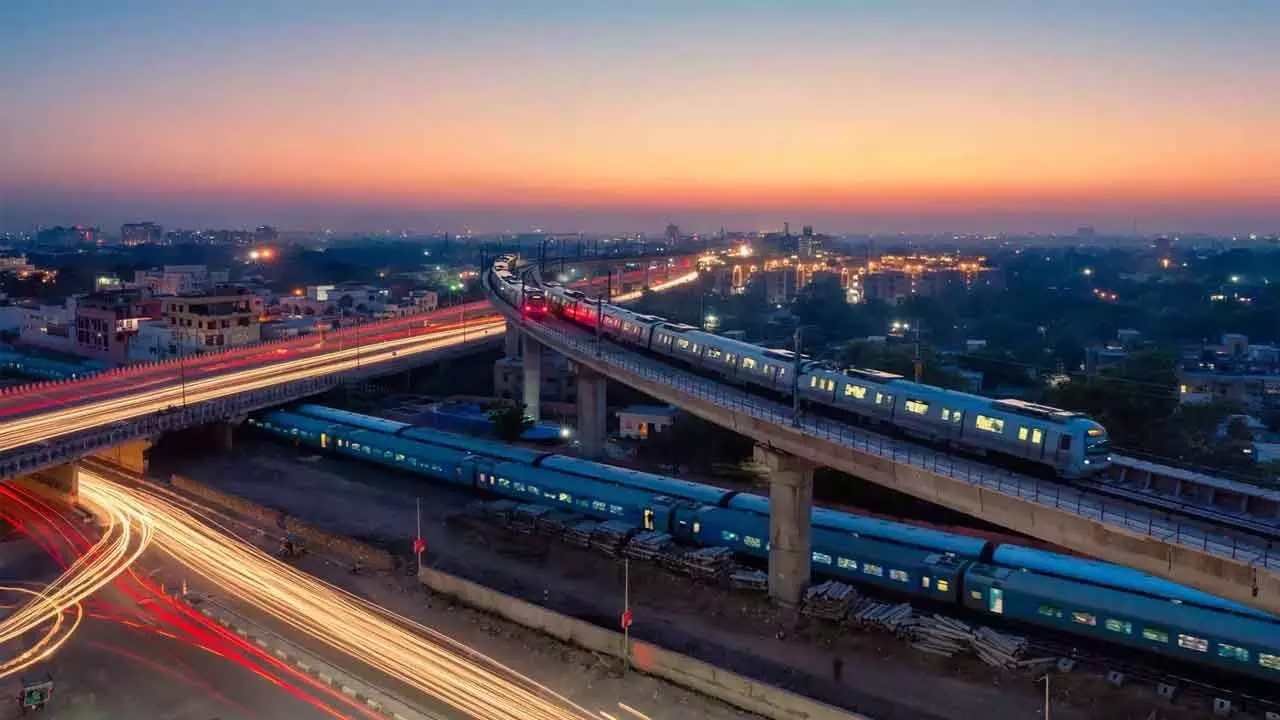India Unlocking Next Level Growth In Infra Building
India Unlocking Next Level Growth In Infra Building

The government’s push for infrastructure development has received a thumbs-up with a study pointing out that the initiatives like PM Gati Shakti and National Logistics Policy (NLP) will help India find a place among the top-25 nations on the World Bank Logistics Performance Index by 2030. Ranked 38 in the World Bank Logistics Performance Index (LPI) out of 139 countries, India strives to be in the top-25 by 2030. Global exhibitor Messe Stuttgart India, in partnership with EAC International Consulting, conducted the study ahead of the international logistics exhibition LogiMAT India 2025, which is scheduled during February 13-15 in Mumbai.
Launched in August 2021, PM Gati Shakti is a tech-based, whole-of-government approach for accelerating infrastructure development. It is a national master plan for multi-modal connectivity. It is essentially a digital platform to bring the ministries concerned together for integrated planning and coordinated implementation of infrastructure connectivity projects. The National Logistics Policy was brought out in September 2022 to bring logistical efficiency in the economy and reduce the cost of freight movement from 13-14 per cent to the global standard of 5-8 per cent of GDP.
The aforementioned study suggests that both initiatives have borne fruit. However, we still have miles to go. While the government continues to spend a lot of money on infrastructure, it should also start focusing more on efficiency.
The actual capital expenditure in 2024-25 is Rs1,018,429 crore, which will increase to Rs1,121,090 crore in the next fiscal. The increase in effective capex, however, is more than 17.4 per cent—from Rs1,318,320 crore in 2024-25 to Rs1,548,282 crore in 2025-26. Effective capex comprises Central government spending on infrastructure and grants to states for capex. That is good.
But the story also has a depressing side. The total cost of the ongoing 1,724 projects with Rs150 crore or more investment was earlier anticipated to be Rs2,572,635.05 crore. Currently, they are expected to need Rs3,078,663.57 crore, an escalation of Rs506,028.52 crore, or about 19.7 per cent. It is time the government focused on bringing down both the cost and time overruns.
Several factors contribute to cost overruns—including bureaucratic delays, land acquisition issues, regulatory hurdles, and supply chain disruptions. In many cases, inefficient planning and poor project execution lead to prolonged completion timelines, further inflating costs. If India aims to make its infrastructure spending more impactful, it must adopt a more disciplined approach to project execution, ensuring accountability at every stage.
Red tape is something only the government can cut. It must empower functionaries with proven competence to end bureaucratic impediments.
PM Gati Shakti is already leveraging technology-driven project management tools to track progress and address bottlenecks in real time. More stringent monitoring mechanisms can be chalked out and executed.
Public-private partnerships (PPPs) can play a greater role in infrastructure building. Encouraging greater private-sector participation can bring in expertise, reduce the financial burden on the government, and improve operational efficiency. Simplifying land acquisition and clearance procedures will reduce delays and cost overruns.
The government must use AI and big data analytics to optimize logistics networks, predict demand fluctuations, and reduce inefficiencies.
Another area needing immediate attention pertains to the up-skilling of the workforce. The implementation of these measures will help India emerge as a global leader in logistics by 2030.

